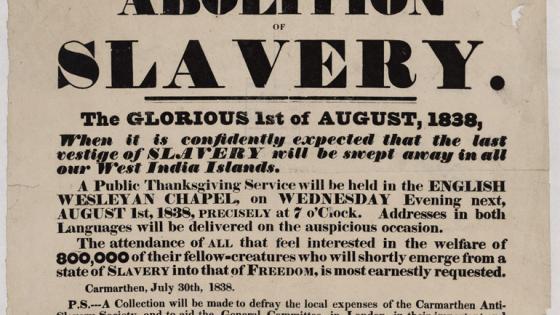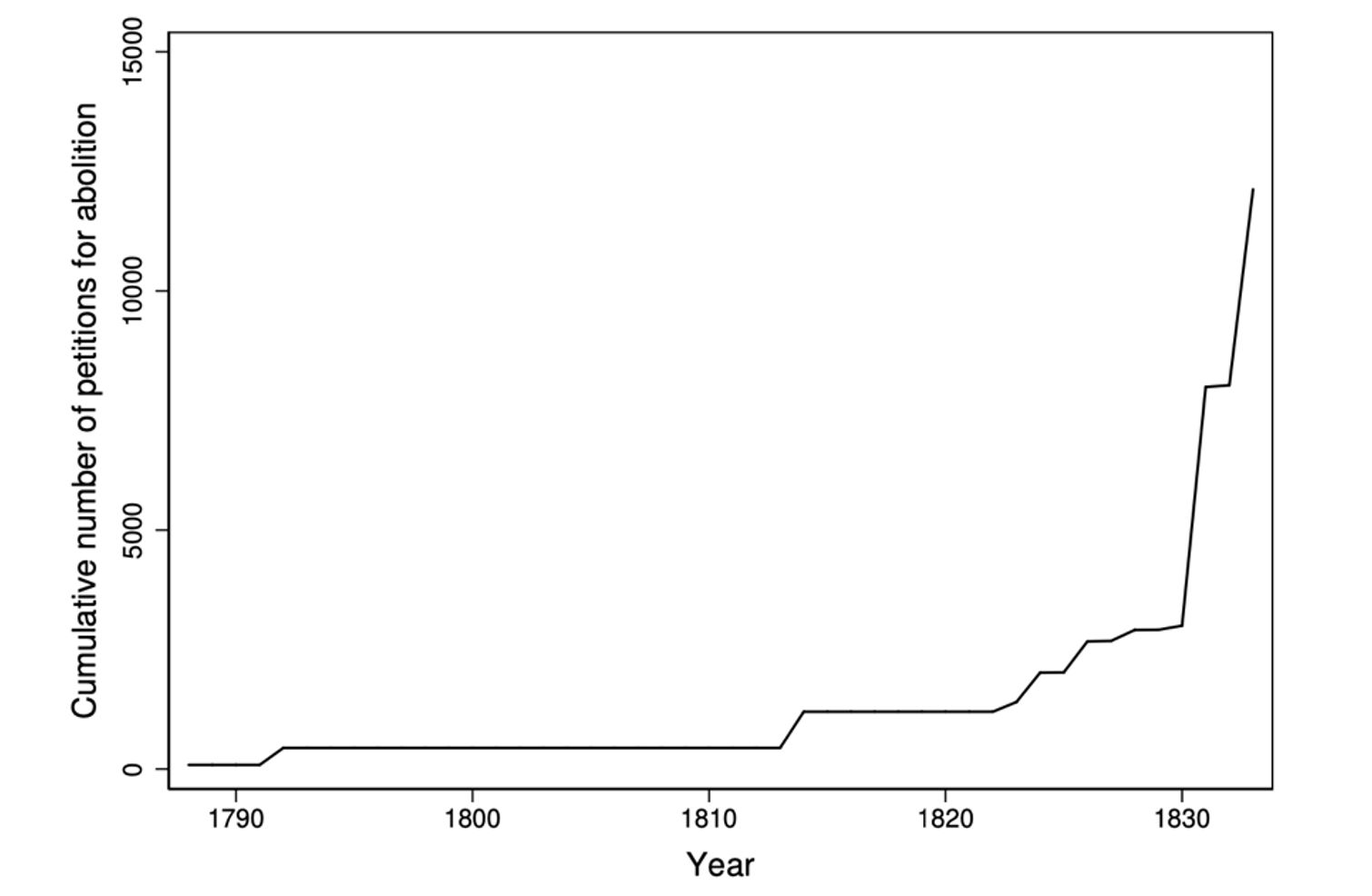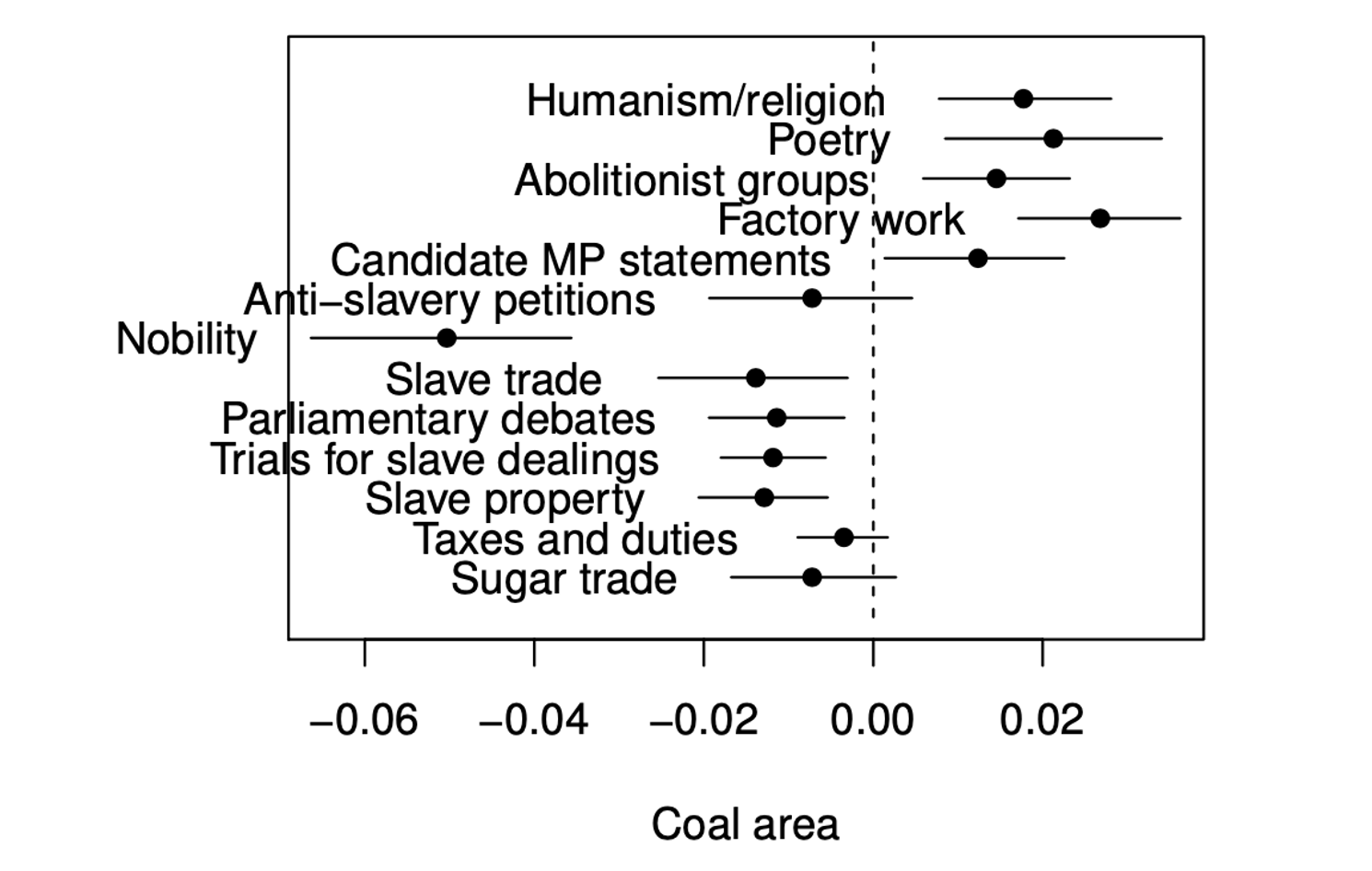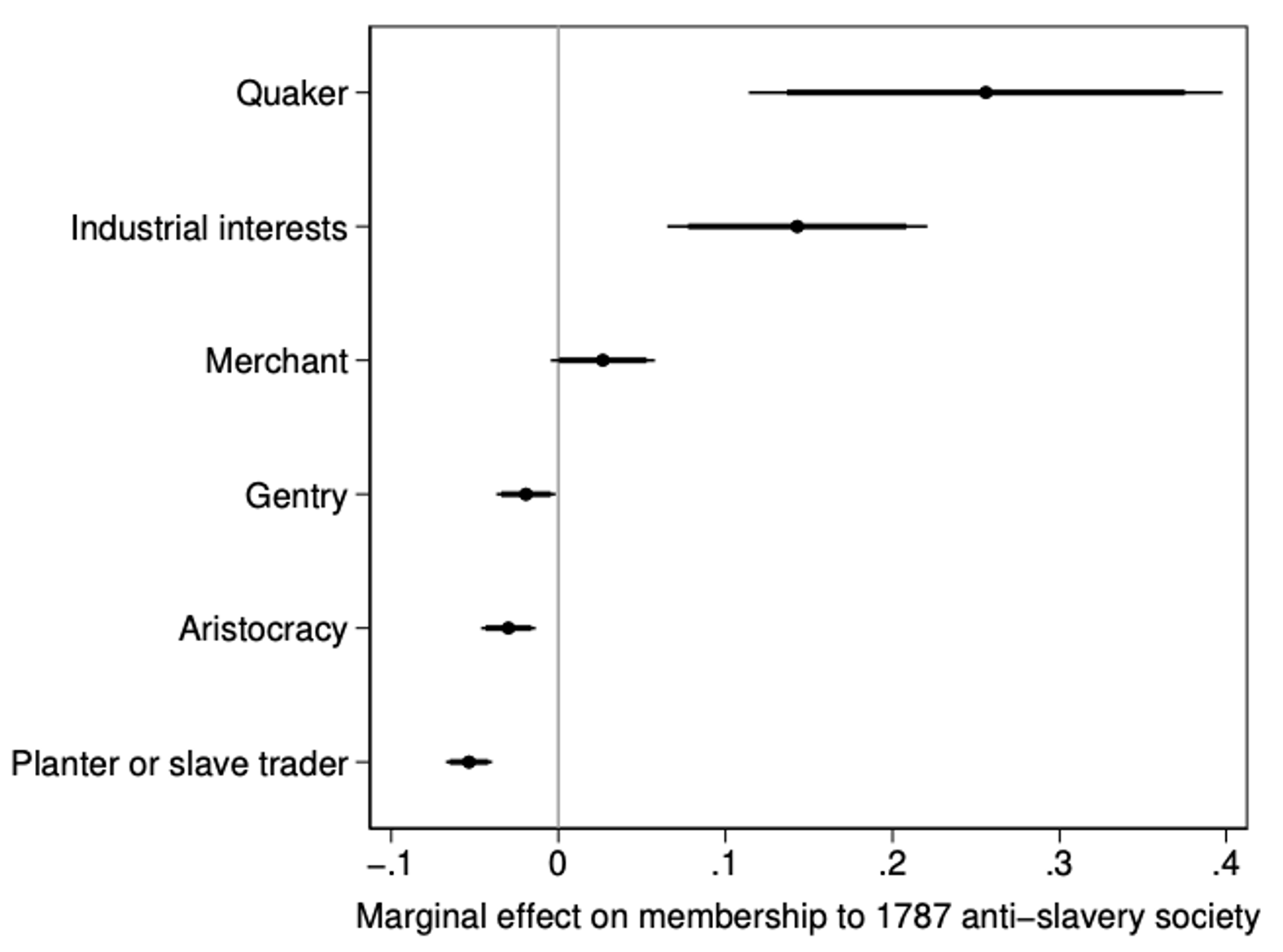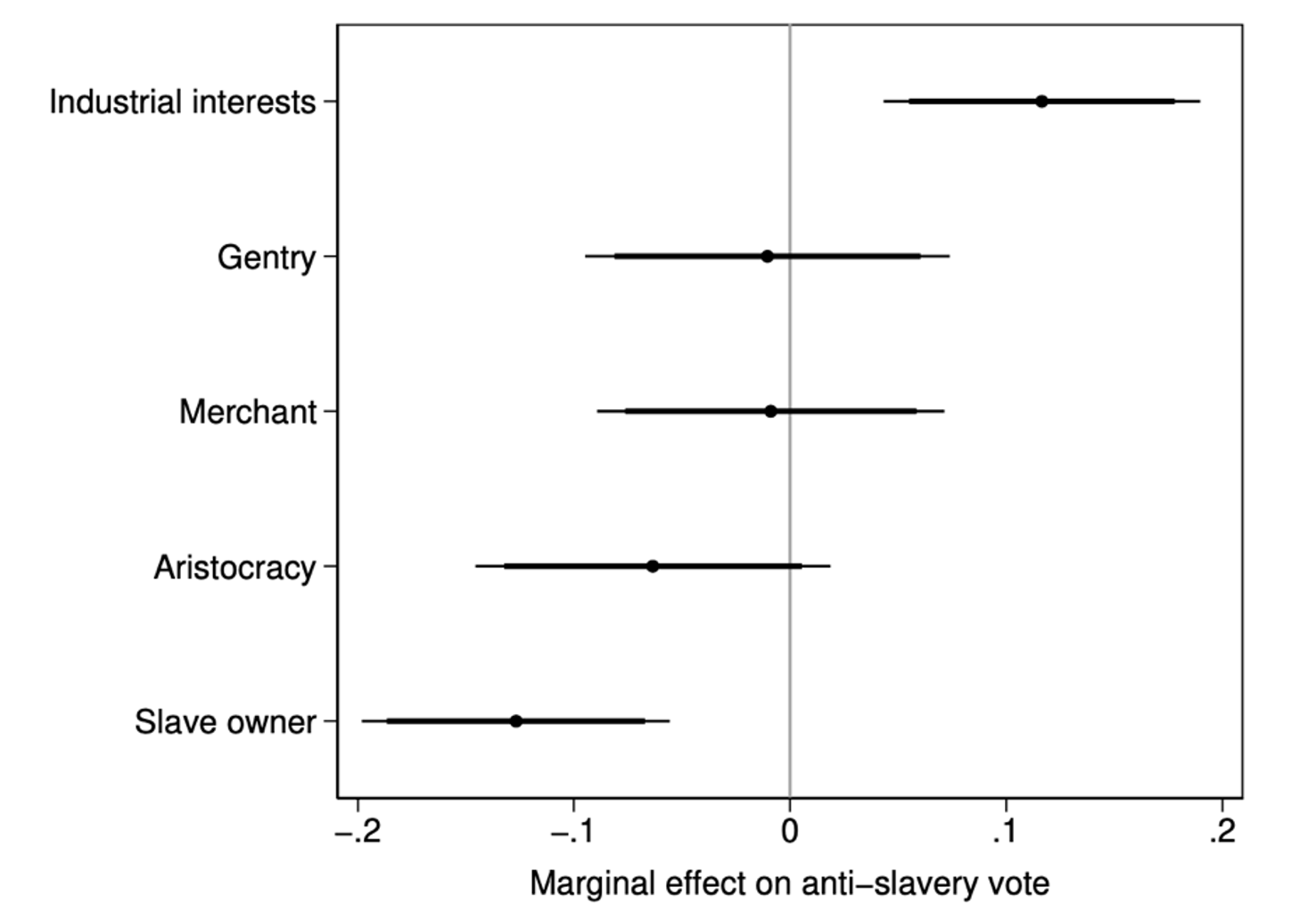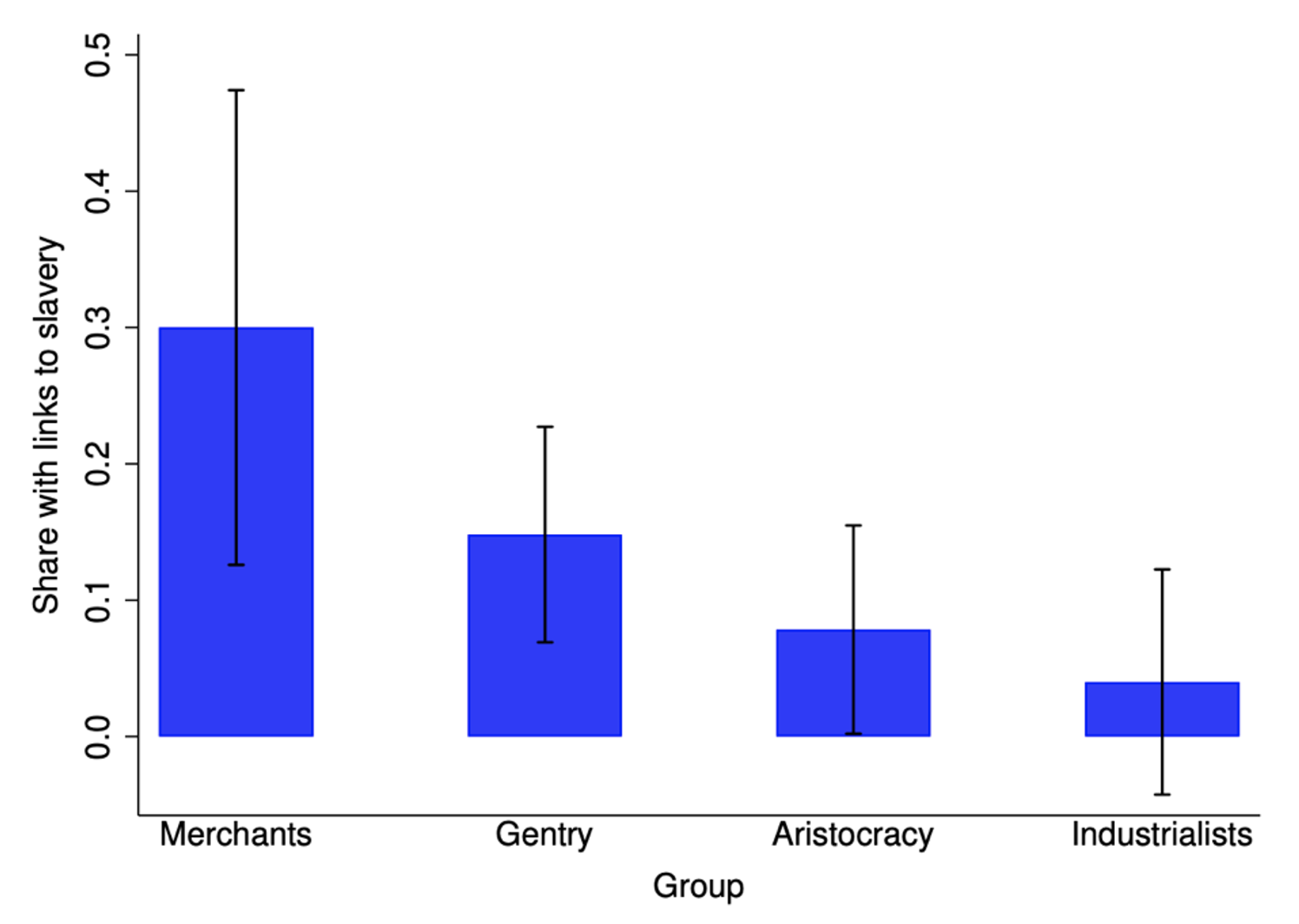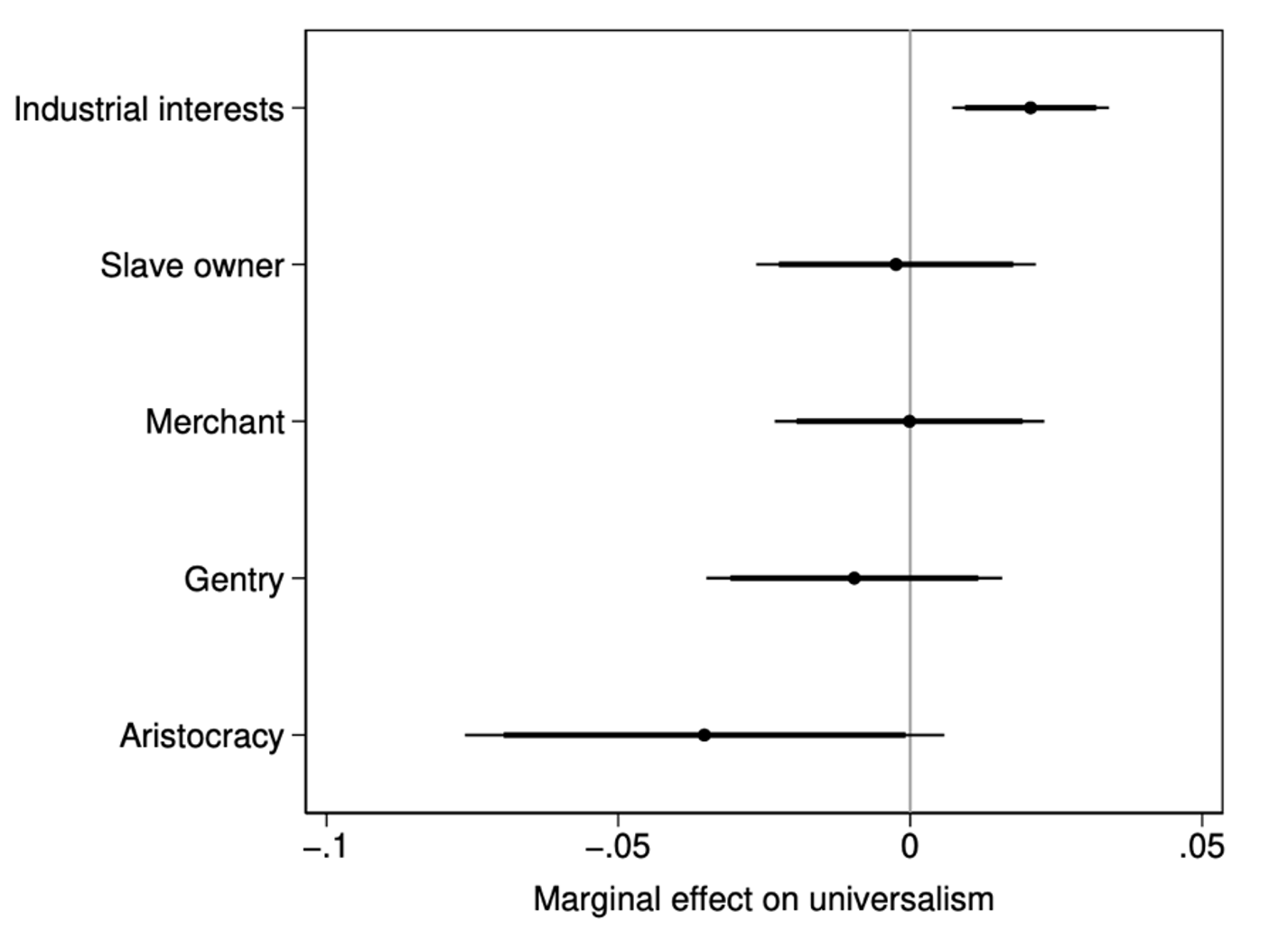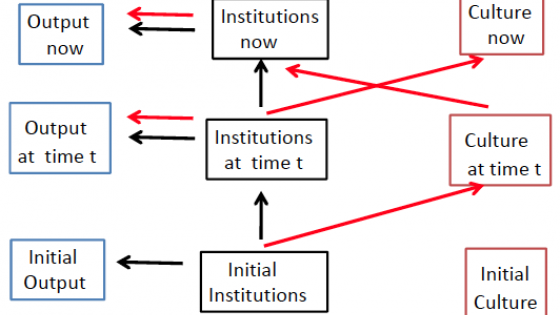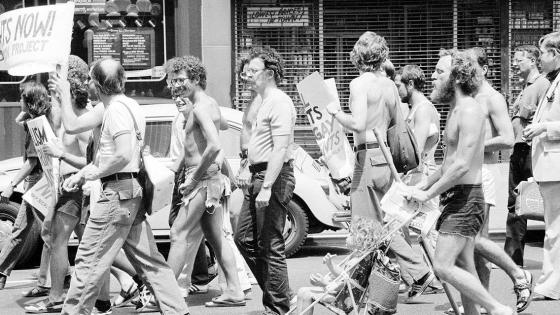Moral values vary across societies and over time. Oftentimes the behaviours and practices supported by a society’s dominant values change rapidly (Appiah 2011). In recent years, Western societies have experienced sharp changes in attitudes about race and gender norms, following the Black Lives Matter and #MeToo movements. Laws and attitudes towards homosexuality shifted radically during the 20th century, and in the 30 years between 1990 and 2020 the proportion of Americans who approved sexual relations between same-sex adults tripled, from 20% to 60% (Parsa and Fernandez 2019).
What drives these episodes of change in a society’s dominant values? In our paper (Figueroa and Fouka 2023), we investigate a mechanism that connects social change to changes in material conditions. We argue that the development of a new dominant economic activity can trigger changes in the distribution of power within a society. When ascending groups have weak economic interests in the moral status quo and have values that are distinct from those of the entrenched elites, they can mobilise for change in social values. This then enables less powerful groups with aligned values to join the movement, creating a cascade of participation in reformist agitation to shift the existing moral paradigm.
Britain’s abolitionist movement during the First Industrial Revolution
We study this mechanism in the movement to abolish slavery in Britain in the late 18th and early 19th centuries, one of history’s most well-known campaigns for social change. Abolitionism represents “one of the greatest discontinuities of human history: a system accepted as moral and just by one generation became a metaphor for extremes of immorality and injustice for the next” (Holt 1990: 372). Even though there were no enslaved people in Britain, the British were major players in the slave trade (forcefully carrying enslaved people from Africa to America) and owned plantations in the Caribbean that produced over half of the world’s sugar in 1805 (Drescher 1977).
Initiated by the Quakers, a dissenting Protestant group, the abolitionist movement quickly grew to find support among the general population. Figure 1 shows the evolution of the number of petitions sent to Parliament in support of the abolition of the slave trade and slavery. The first petition campaign of 1788 was small, producing less than a hundred petitions. By 1833, public support for abolition was so large that over 20% of all British men over 15 years of age had signed a petition for the abolition of slavery (Drescher 1982).
Figure 1 The cumulative number of petitions for abolition sent to Parliament
The parliamentary act that abolished slavery in 1833 compensated slave owners for £20 million (about 5% of British GDP). Kaufman and Pape (1999) estimate the overall cost of anti-slavery activities at 1.78% of national income each year from 1808 to 1867. Partly for this reason, there is no general agreement among historians about why abolition took place.
The rise of abolitionist values coincided with the Industrial Revolution and the corresponding rise to power of a new manufacturing elite. England was rapidly urbanising and becoming the workshop of the world. Manufacturers gained economic and political power (Fresh 2020). The new industrial elite had distinct middle-class origins, a strict work ethic and a disdain for leisure (Doepke and Zilibotti 2008). Industrialists also defended an ideology based on a free market for labour (Davis 1966).
Because industrialisation and the rise of anti-slavery attitudes coincided temporally, it is not surprising that historians have linked the two phenomena (e.g. Williams 1944, Davis 1966, Drescher 1986). Our paper examines new data to document how industrialisation contributed to changing the dominant values in Britain.
Abolitionist mobilisation outside Parliament
We first focus on mobilisation outside Parliament. Using data on all the petitions received by the House of Commons before 1833 and proxies for industrialisation at the parish level (based on the availability of coal and hydraulic power), we show that industrialising parishes sent more abolitionist petitions than other parishes.
To further dive into the motivations of the petitioners in industrialising areas, we turn to the British Newspaper Archive: we analyse textual data from over 12,000 newspaper articles published between 1787 and 1833 that mention the words ‘slave’ or ‘slavery’. We find that newspapers from industrial areas were more likely to discuss slavery using humanist arguments. Figure 2 shows how much more prevalent certain topics were in newspapers from industrial areas compared to newspapers from non-industrial areas.
Figure 2 How much more/less likely different topics were in newspapers from industrial areas relative to other newspapers
Rather than discussing slavery and the slave trade in economic terms, newspapers from industrial areas opposed slavery in strictly moral terms:
‘Thou shalt love thy neighbour as thyself’, under which term we believe are comprehended our fellow creatures of every nation, tongue and colour … Can there be a greater violation of his righteous law, than to buy and sell our fellow men, to claim a right of property in them and their offspring, to hold in perpetual bondage those for whom, as for us, Christ died!
The leaders of the abolitionist movement were disproportionally involved in industrial activity. The first abolitionist society, the Society for the Purpose of Effecting the Abolition of the Slave Trade, was founded in 1787. We match a list of prominent men featured in the Oxford Dictionary of National Biography who had reached adulthood by 1787 with the official list of subscribers to the anti-slavery society. We find that men with industrial interests were significantly more likely to be members of the Society than other individuals, except for Quakers (Figure 3).
Figure 3 Which groups were more likely to be abolitionists
One of the only surviving petition documents, a petition for the abolition of the slave trade from Manchester in 1806, provides further evidence that manufacturers led the abolitionist movement. Because the collection of signatures in abolitionist campaigns did not rely on door-to-door canvassing, we can use the signature order as a proxy for an individual’s centrality in the abolitionist campaign (Makovi 2019). Using individual data on occupations, available from the Manchester and Lancaster Family History Society, we show that manufacturers not only were the largest group of signatories but also signed the petition earlier than individuals of other occupations.
Abolitionism in Parliament
After establishing a link between industrialisation and grassroots abolitionist activity, we turn to studying MPs’ behaviour in Parliament. In 1833, Parliament debated the abolition of slavery in the colonies and the conversion of enslaved persons into apprentices. Information from MP biographies and roll-call votes on abolition show that industrialist MPs were significantly more likely than other MPs to display an anti-slavery stance, supporting low compensation for slave owners and better apprenticeship conditions for freed persons (Figure 4).
Figure 4 Which MPs were more likely to support abolition in 1833
Part of the industrialists’ support for abolition stemmed from their weak economic links to slavery. We matched MPs with records from the Legacies of British Slavery database (Hall et al. 2014) to identify those who owned plantations or claimed ownership over enslaved persons in the West Indies. Figure 5 shows that industrialist MPs were the group that invested the least in West Indian slavery.
Figure 5 Which MPs had more links to slavery
In addition to weak economic links to slavery, the rising industrial elites also had distinct moral values. To measure these values, we turn to all the speeches delivered in Parliament in 1832–1833 (Eggers and Spirling 2014). We measure values from speeches relying on Moral Foundations Theory (Haidt 2007), which classifies moral values into different foundations, each emphasising a different principle for what is a morally correct action. We focus on ‘universalist’ and ‘communal’ morality (Enke 2020, Enke et al. 2022). Universalism captures the extent to which altruism extends beyond a narrow ingroup (Enke et al. 2020) and thus applies well to the idea advanced by abolitionists of recognising basic rights for enslaved people.
Using the Moral Foundations Dictionary, we identify terms associated with each set of moral foundations in the MPs’ speeches. As Figure 6 shows, industrial MPs were more universalist in their broader discourse than other MPs. Importantly, slave owners were not less universalist, but groups with weak links to slavery such as aristocrats were. These results suggest that both economic interests and values shaped MPs’ behaviour in Parliament.
Figure 6 Which MPs had more universalist speech
Structural transformation and value change
Our study demonstrates a link between structural transformation and social change in one of the most prominent historical examples of both: the abolitionist movement of the Industrial Revolution in Britain. We provide new empirical evidence that helps reconcile contrasting historical interpretations (Williams 1944, Davis 1966, Drescher 1986) and reveals a role for both economic interest and values in driving social change. As such, our study complements work that emphasises the feedback between culture and structural conditions, rather than the primacy of one’s influence over the other (Greif 1994, Bisin and Verdier 2017, Verdier and Bisin 2017, Acemoglu and Robinson 2021).
References
Acemoglu, D, and J A Robinson (2021), “Culture, institutions and social equilibria: A framework”, NBER Working Paper 28832.
Appiah, K A (2011), The honor code: How moral revolutions happen, WW Norton and Company.
Bisin, A, and T Verdier (2017), “On the joint evolution of culture and institutions”, NBER Working Paper 23375.
Verdier, T, and A Bisin (2017), “Institutions and culture co-evolve: Why the quest for the origin of prosperity is so elusive”, VoxEU.org, 4 July.
Davis, D B (1966), The problem of slavery in Western culture, New York: Oxford University Press.
Doepke, M, and F Zilibotti (2008), “Occupational choice and the spirit of capitalism”, Quarterly Journal of Economics 123(2): 747–93.
Drescher, S (1977), Econocide: British slavery in the era of abolition, Chapel Hill: The University of North Carolina Press.
Drescher, S (1982), “Public opinion and the destruction of British colonial slavery”, in J Walvin (ed.), Slavery and British Society 1776–1848, Baton Rouge: Louisiana State University Press.
Drescher, S S (1986), Capitalism and antislavery: British mobilization in comparative perspective, London: MacMillan Press.
Eggers, A C, and A Spirling (2014), “Electoral security as a determinant of legislator activity, 1832–1918: New data and methods for analyzing British political development”, Legislative Studies Quarterly 39(4): 593–620.
Enke, B, R Rodríguez-Padilla, and F Zimmermann (2020), “Moral universalism and the structure of ideology”, NBER Working Paper 27511.
Enke, B (2020), “Moral values and voting”, Journal of Political Economy 128(10): 3679–728.
Enke, B, B Tungodden, and A Cappelen (2022), “Moral universalism: Global evidence”, VoxEU.org, 9 October.
Figueroa, V, and V Fouka (2023), “Structural transformation and value change: The British abolitionist movement”, NBER Working Paper 31708.
Fresh, A (2020), “Industrial Revolution and political change: Evidence from the British Isles”, mimeo.
Greif, A (1994), “Cultural beliefs and the organization of society: A historical and theoretical reflection on collectivist and individualist societies”, Journal of Political Economy 102(5): 912–50.
Haidt, J (2007), “The new synthesis in moral psychology”, Science 316(5827): 998–1002.
Hall, C, N Draper, K McClelland, K Donington, and R Lang (2014), Legacies of British slave-ownership: Colonial slavery and the formation of Victorian Britain, Cambridge University Press.
Holt, T C (1990), “Review: Explaining abolition”, Journal of Social History 24(2): 371–78.
Kaufmann, C D, and R A Pape (1999), “Explaining costly international moral action: Britain’s sixty-year campaign against the Atlantic slave trade”, International Organization 53(4): 631–68.
Makovi, K (2019), “The signatures of social structure: Petitioning for the abolition of the slave trade in Manchester”, Social Science History 43(1): 625–52.
Parsa, S, and R Fernandez (2019), “Coming out: AIDS, institutions, and cultural change”, VoxEU.org, 20 June.
Williams, E E (1944), Capitalism and slavery, Chapel Hill: The University of North Carolina Press.
